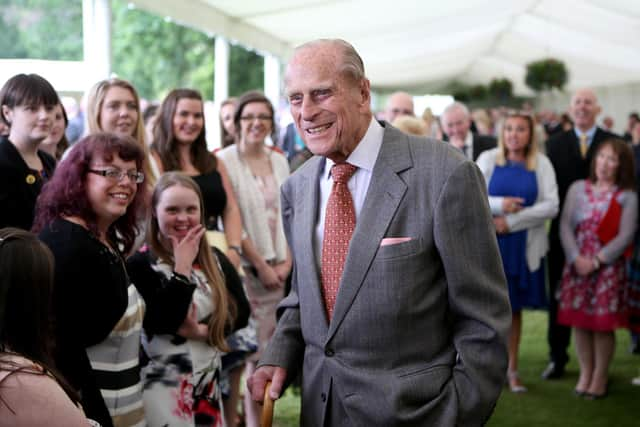What is the Duke of Edinburgh Award? How bronze, silver and gold scheme works - and the age you can take part
As the Queen’s consort, Prince Philip achieved many things throughout his life.
But perhaps his most enduring legacy, following his death aged 99 on Friday (9 April), is his Duke of Edinburgh’s Award scheme for young people.
Advertisement
Hide AdAdvertisement
Hide AdAccording to the duke, the programme “helped countless young people on their sometimes difficult path to adulthood”.


And he once described the Award as a “do-it-yourself growing-up kit”.
So, what is The Duke of Edinburgh’s Award, how can you take part – and what was Philip’s involvement in it?
Here is everything you need to know.
What is the Duke of Edinburgh’s Award?
The Duke of Edinburgh’s Award was first launched in 1956, in collaboration with German educationalist Kurt Hahn - who was also a founding headmaster of Gordonstoun School where Philip was a pupil - and Lord Hunt, who led the first successful climb of Everest.
Four years later, the scheme had spread throughout the Commonwealth.
Known overseas as the Duke of Edinburgh’s International Award, the programme has now expanded to operate in more than 140 countries, with more than eight million participants around the globe since it began.
Young people aged between 14 and 25 sign up to DofE, as it is often shortened, for extra-curricular experiences and activities and to learn new outdoor and life skills.
Advertisement
Hide AdAdvertisement
Hide AdIt is designed to encourage them to learn self-reliance, commitment, responsibility and community service as well as nurturing personal discovery.
What are the Award levels?
The three separate attainment levels - bronze, silver and gold - are a recognised mark of achievement by employers.
Each level comes with an increasing degree of responsibility and commitment.
Typically, as they work towards the Award, young people will complete tasks which involve helping the community and the environment, developing some new skills and planning, training for and completing an outdoor expedition.
It takes roughly six months for most participants to complete the four sections of the bronze award: volunteering, a physical challenge, developing a skill and taking part in a two-day walking expedition.
The silver and gold awards are more challenging and take longer to complete.
In the UK, nearly half a million young people take part in the scheme at any one time. Three million DofE awards have been achieved since its conception.
How can you take part in the scheme?
Advertisement
Hide AdAdvertisement
Hide AdThe charity licenses thousands of UK organisations that work with young people to help them complete their DofE Award - from schools to youth groups.
If you’re interested in taking part, you can contact your school, college or university to see if they run it or would consider setting it up.
You can also join a national youth group that runs the DofE for members, such as Scouts or Girlguiding.
Or, your local youth club may have a licence.
And if you’re over 18, you can achieve your gold award online and independently without attending weekly sessions at a local DofE centre.
What was Prince Philip’s involvement in the scheme?
Prince Philip was patron of the charity.
Speaking in 2010 about the award, he said it had gone from “strength to strength”, and employers were “recognising the experiences gained and the characteristics developed by the young people that take part”.
Only those who achieved a gold award got to meet the duke, who would hand them out around 10 times a year at St James’s Palace, the Palace of Holyroodhouse in Edinburgh and Hillsborough Castle in Northern Ireland.
Philip celebrated handing out his 500th gold award in 2013.
The duke’s son, Prince Edward, who is a trustee of the charity, took over the ceremonies from his father.
Advertisement
Hide AdAdvertisement
Hide AdHe is expected to continue the duke’s work with the DofE scheme.
Ruth Marvel, DofE’s CEO, paid tribute to Philip after his death. She said: "The Duke's timeless vision for young people has never been more relevant or needed.
"The DofE has played a crucial role in supporting young people to survive and thrive despite the unprecedented challenges of the pandemic, and we will continue to build on his legacy.
The Duke was a lifelong advocate for young people, believing in each individual's potential.
"We're honoured to continue HRH's work, to ensure that all young people - especially those from marginalised groups - can benefit from the better educational outcomes, employment prospects, community ties and better mental health that are associated with doing DofE."